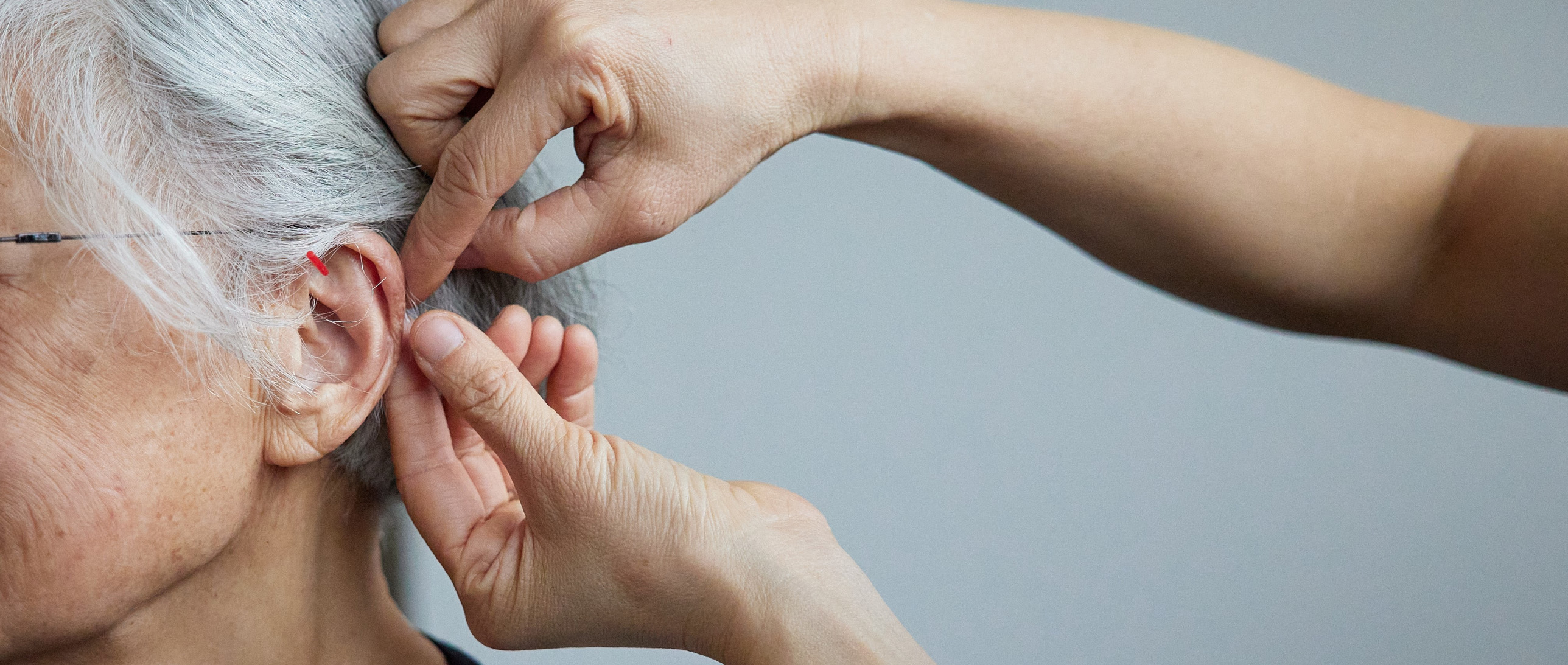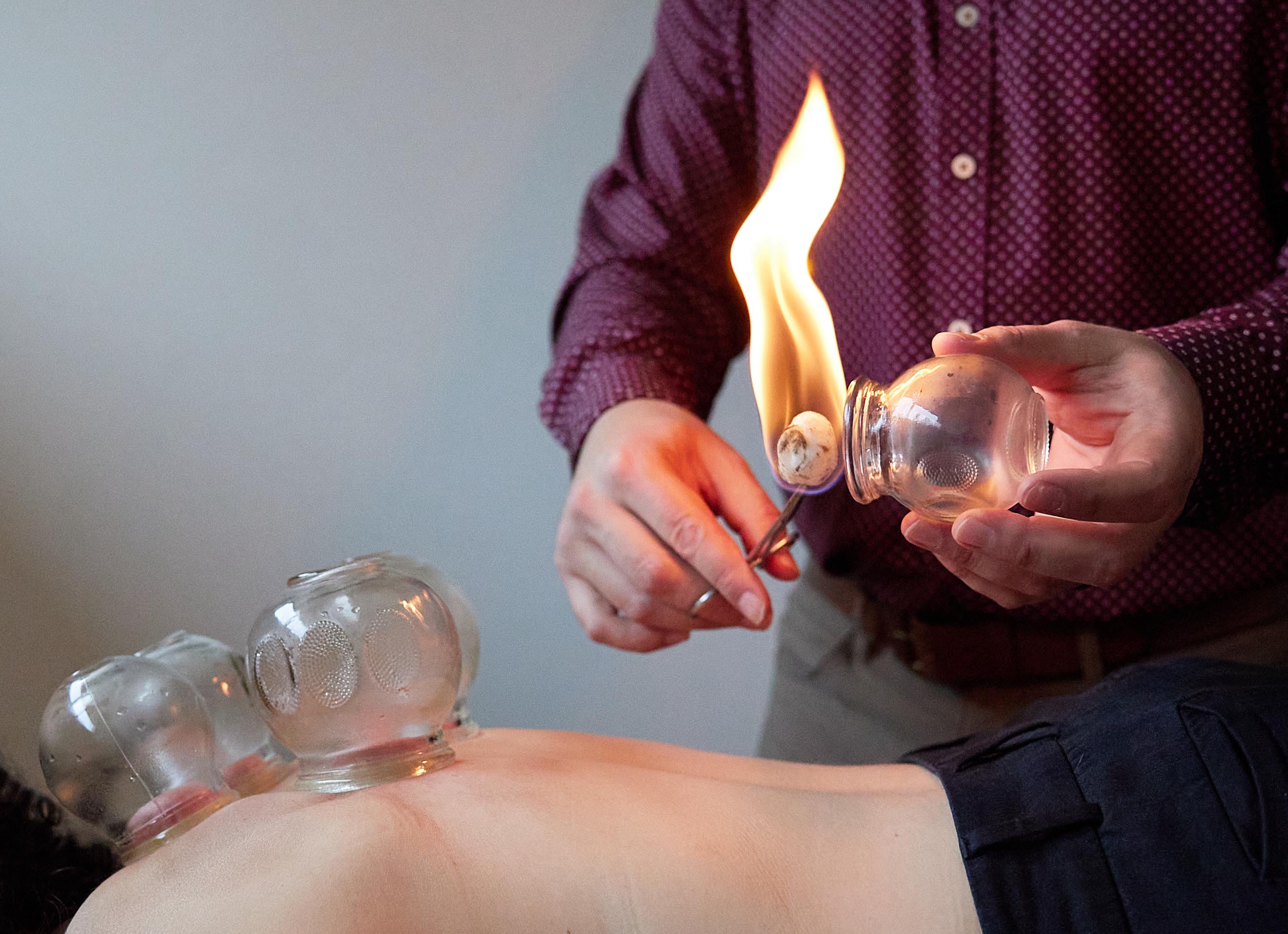
Other Therapies
Our practitioners have training in additional styles of therapy to support your healing and recovery.

Other Therapies
Our practitioners have training in additional styles of therapy to support your healing and recovery.
Muscle Testing and Reactivation
Muscle Testing and Reactivation identifies specific muscle groups that are underactive or overactive, and is very useful for musculoskeletal pain, daily physical function, and athletic performance. During the session, the practitioner isolates and tests every muscle surrounding the affected area to find patterns that lead to pain and movement restrictions. This helps us to find the root of the symptoms, know which muscles to reactivate, and correct the imbalance. Then the practitioner uses techniques such as Manual Muscle Reactivation or Motor Point Acupuncture to elicit a muscle fasciculation (twitch response), which “wakes up” the inhibited muscles and leads to less pain, better range of motion, and improved performance.
Kinesiology Taping
Kinesiology Taping, also known as Kinesiotape, is a therapy using a very specific type of stretchy tape that is applied directly to the skin in various configurations and levels of tension. Kinesiotape can help to reduce pain and swelling at the site of injury, increase mobility, prevent muscle spasms, stabilize injured or weak joints, and aid with lymphatic drainage. While Kinesiotape is a supportive therapy that works best when used in conjunction with other treatments we provide, we also offer 15-minute Kinesiology taping session that can be scheduled in-between your normal acupuncture sessions for lasting pain relief and to maximize therapeutic efficacy.
E-stim and Micro-current Therapy
Electrical stimulation (milli-amperage stimulation, or TENS) and Micro-current therapy are both tools used for extra benefit in treatment. TENS has been used world-wide for decades to help control pain, is widely available, inexpensive and can be very effective in pain control.
Micro-current therapy uses millionths of an Ampere levels of stimulation that are designed to work with the body's existing electrical physiology to enhance our capacity to repair injury or enhance function. Micro-current therapy was developed in the US and is FDA registered for the treatment of pain, depression, anxiety and insomnia. This level of current is felt quite gently, if at all, and increases the capacitance in the cell wall, enhancing the cell's ability to function. Ongoing research continues to reveal new benefits to Micro-current therapy.
Massage Therapy
Massage Therapy services at Meridian Health Solutions are offered by Licensed Massage Therapy and Bodywork practitioners with extensive experience. Many types of massage and various depths of pressure can be employed, depending on each client's needs and circumstances. Services may include Craniosacral Therapy, Myofascial Relief, Trigger Point Therapy, and Reflexology. Our practitioner is certified in Prenatal Massage, and safely works with people throughout pregnancy.
Moxibustion
Moxibustion (Moxa) is part of the ancient Chinese medicine toolbox and is used externally to treat a range of diseases. The procedure involves burning the herb mugwort (artemisia vulgaris) near or on the skin and is typically used in addition to needles during an acupuncture treatment. A safe, effective, and well-studied modality, moxa can greatly enhance the benefits of an acupuncture treatment and is used often in the treatment of pain, digestive disorders, fertility and menstrual disorders, and even in pediatrics. Perhaps the most well-known use of moxa is in the treatment of breech presentation during pregnancy. The skin is treated either directly with small grain-sized bits of the herb placed directly on the skin, or indirectly using small incense sticks or large sticks rolled with the herb, to warm the area and produce certain effects. The thermal properties of burning moxa combined with the pharmacologic effects of the herb itself are what give moxibustion therapy its efficacy.
Cupping
 Cupping has been gaining popularity in recent years. It's common now to see images of dark circles on Olympic athletes who've used cupping to treat muscle pain, or of a model with beautiful skin promoting facial cupping. It may (or may not) surprise you to learn that cupping has been practiced for centuries!
Cupping has been gaining popularity in recent years. It's common now to see images of dark circles on Olympic athletes who've used cupping to treat muscle pain, or of a model with beautiful skin promoting facial cupping. It may (or may not) surprise you to learn that cupping has been practiced for centuries!
Cupping is a technique where cups or bowls are place on the body using suction. Cups are made of a variety of materials including glass, silicone, porcelain, plastic, and more. And the suction is created with a pump or in fire cupping by using a small flame to create a vacuum inside the cup. Cupping is an effective technique to relieve pain, increase circulation, and promote healing. There are cups or different sizes and shapes for different areas of the body. Different techniques may be used such as sliding or leaving the cups in a stationary position, and oils can be used on the skin to help adhere the cup and prevent discomfort.
Depending on the goal, cupping is used differently for different applications. For example, in facial cupping the goal is to increase circulation to the facial skin and muscles in order to increase circulation and collagen, therefore suction is light, the cups are small with various shapes to fit the contours of the face, and usually are not left stationary to avoid the dark markings that can occur from cupping, and the oil used will be a moisturizer that is safe to use on the face. On the other hand, cupping to relieve pain back will usually be larger, the suction stronger, the cups often leave marks, and the oil is often an analgesic balm to help increase the pain relief.
The marks left by cupping resemble bruises and people often assume the marks are painful. The opposite is actually true, while the marks look like bruises, they are not painful like bruises. In fact, the areas where the cup marks are present are usually the area with significant pain relief.
Guasha
Guasha is a technique where a variety of tools including stones such as jade, ceramic tools, or metal are run along the skin in a scraping motion. Recently guasha has been increasing in popularity for its ability to rejuvenate the skin. Guasha is also used to relieve pain and promote healing.
Much like cupping, the technique used during guasha depends on the intended goal. For facial guasha the tools are usually a cool stone such as jade cut into various shapes to fit the contours or the face and will have a very gentle edge to protect the skin, the oils used will be gentle and safe to use on the face, and the pressure will be gentle to avoid leaving marks. Guasha for neck tension will often use ceramic, bone or metal tools that are stronger to withstand more pressure, usually have more stark angles to get deeper into the muscles, the oil used is often an analgesic balm to increase pain relief, and the pressure applied is stronger and often leaves marks.
Just like cupping the marks left from guasha resemble bruising and, also like cupping, they are rarely painful. Cupping and guasha markings can vary in color from light pink or red, to a deep crimson, to dark purple verging on black. These are all normal! In fact, these marks help inform your practitioner about the depth and severity of your condition.
